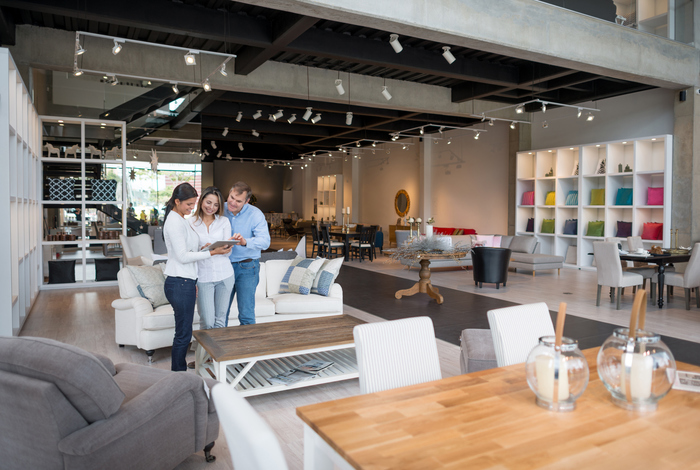The layout of a furniture store is a critical component of the furniture business. It’s the first impression customers will have of the store, and it can influence their purchasing decisions. To maximize sales, it’s important to create a visually appealing, efficient, and organized space. That’s why it’s so important that business owners must invest in retail space planning to optimize their furniture store’s layout for maximum impact. Here are some best practices business owners can use to improve their office outlook and boost sales.
Create a Focal Point
The focal point of your furniture store should be easy to spot. It could be a piece of furniture, like an accent chair or loveseat, or an entire vignette showing how different pieces work together in one space. Regardless of the business owner’s choices, they must ensure it stands out from the other items in their store. That way, customers have something to draw their eye toward when they first enter.
Group Items by Category
The inventory should be organized into distinct categories so customers can easily find what they’re looking for. Grouping items by style, color, material, or room is an effective way to do this. Consider adding signs above each category to help guide customers through your store. This will streamline their shopping experience and encourage them to browse more items while they’re there.
Set Up Multiple Seating Areas
It’s important to set up multiple seating areas in a furniture store so that customers can better understand how certain pieces might look and feel in their homes. Encourage customers to try out different pieces by placing them near each other to compare styles and fabrics side by side. Use area rugs and throw pillows to create inviting spaces that draw customers in and make them want to stay longer.
Use Low Tables and Displays Strategically
Low tables and displays are another great commercial design that can help customers visualize how certain pieces might look in their homes. Place lamps, photo frames, books, plants – anything that might help people imagine how these items would look inside their own home – on these tables and displays as an eye-catching way to show off your latest styles and trends without taking up too much floor space.
Maximize Visibility
Maximizing visibility is one of the most crucial considerations when designing a furniture store layout. Customers should be able to identify the items they are looking for easily, so make sure that you place them in such a way that they can be easily seen from any angle or point of view. Utilizing endcap displays and strategically placed merchandise displays can help customers zero in on what they’re looking for quickly and efficiently. It’s also important to ensure that there are no blind spots or hidden places where merchandise may go unseen.
Make Use of Different Levels
When displaying furniture, it’s always best practice to use different levels to create an interesting and inviting atmosphere. For example, placing couches at eye level will draw the customer’s attention more than if they were placed on the floor or hung high up on the wall. This allows customers to better understand how particular pieces of furniture look and feel without bringing them into their home environment. Additionally, using different heights for display cases helps create interest and draw customers further into the store when browsing its selection.
Utilize Open Spaces Wisely
Business owners must utilize open spaces wisely when designing a furniture store layout. Open spaces add visual interest and balance out larger pieces of furniture like tables or couches, which tend to take up more visual and physical space. Make sure that these open spaces aren’t too large; otherwise, customers may feel overwhelmed by all the space around them while shopping in your store. Utilizing smaller accent tables, sculptures, plants, etc., will help fill up any extra space while maintaining an airy feel throughout your showroom. With the help of a reputable commercial interior design firm, businesses can utilize open spaces adequately.
Focus on Flow and Movement
How customers move through your furniture store should be planned out in advance. Think about how customers will move through the space, what areas they should visit first, and how items should be arranged in each store section. This will help ensure that customers get an optimal experience when browsing through the store, making it easier for them to get what they want.
Create Clear Pathways
Ensure there are clear pathways throughout the store that guide customers from one area to another. Customers should never feel lost or confused when navigating the space; instead, they should feel comfortable and confident as they explore different store sections.
Incorporate Technology
Business owners should remember to incorporate technology into their furniture store’s layout. They can use digital displays or interactive kiosks to provide additional information about products or services, making it easier for customers to find what they’re looking for without asking questions or searching around aimlessly for answers.
Hire the Experts to Create an Effective Showroom
When it comes down to it, designing an effective retail furniture store layout requires careful consideration (and possibly some trial-and-error) before you get it just right. However, if a business owner can maximize visibility, use different levels, utilize open spaces wisely, create separate areas, and more, they are close to getting it right. The right commercial interior design firm will have all the tools necessary to design a beautiful yet functional showroom that will draw customers into a store every time.
